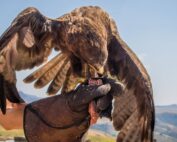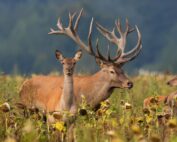Introduction to Photography in 2023
The world of photography is constantly evolving, with new technology and trends emerging. Photography has become more accessible and popular than ever before, thanks to advancements in digital cameras and smartphone technology. Whether you are a beginner or an experienced photographer, there is always something new to learn. In this comprehensive guide, we will take you through the essential steps to mastering photography for beginners in 2023.
How Does a Camera Work?
To understand photography, it is important to know how a camera works. Cameras use lenses to focus light onto a light-sensitive surface, such as a digital sensor or film. The lens bends and focuses the light to create an image, and the camera’s shutter controls the amount of time the light is allowed to hit the sensor or film. The aperture, or the size of the lens opening, controls the amount of light that enters the camera. By understanding these basic components of a camera, you can begin to take control of your photography.
Understanding Camera Types
There are several different types of cameras available in the market, each with its own unique features and advantages. The most popular type of camera among professional photographers is the DSLR, or Digital Single Lens Reflex camera. DSLRs have large sensors and interchangeable lenses, allowing for high-quality images and manual control over settings. Another type of camera gaining popularity is the mirrorless camera, which is smaller and lighter than DSLRs but still offers interchangeable lenses and high-quality images. Point-and-shoot cameras are compact and easy to use, making them ideal for casual photographers. Medium format cameras offer the highest resolution and are used for commercial and professional photography. Action cameras are rugged and waterproof, perfect for capturing fast-moving action.
Understanding Camera Features
When choosing a camera, it is important to consider its features and how they will affect your photography. Sensor size determines the image quality, with larger sensors generally producing better results. Resolution refers to the number of pixels in an image and affects the sharpness and detail. The lens is responsible for focusing the light onto the sensor and different lenses are suitable for different types of photography. Shutter speed controls the amount of time the sensor is exposed to light, while ISO determines the camera’s sensitivity to light. Image stabilization and autofocus help to capture sharp and focused images. By understanding these features, you can choose a camera that meets your needs and produces the results you desire.
Mastering Composition and Lighting
Composition and lighting are essential aspects of photography that can make or break an image. Composition refers to the arrangement of elements within a photograph and involves principles such as the rule of thirds, leading lines, symmetry, and balance. By understanding these principles, you can create visually appealing and impactful compositions. Lighting sets the mood, highlights features, and adds depth and dimension to an image. By understanding the properties of light and using tools such as reflectors and diffusers, you can create different lighting effects and enhance your photographs.
Understanding Exposure
Exposure is the combination of aperture, shutter speed, and ISO, which control the amount of light that enters the camera and hits the sensor. Aperture determines the size of the lens opening, shutter speed controls the length of time the shutter is open, and ISO determines the camera’s sensitivity to light. By understanding how these three elements work together, you can achieve the desired exposure for your photographs. The exposure triangle is a helpful concept that illustrates the relationship between aperture, shutter speed, and ISO. By adjusting these settings, you can control the amount of light captured and create different effects in your photos.
Shooting in Different Modes
Cameras offer different shooting modes that provide varying levels of control over the settings. Manual mode gives you complete control over aperture, shutter speed, and ISO, allowing for full creative control. Aperture priority mode allows you to set the aperture, while the camera selects the appropriate shutter speed for proper exposure. This mode is ideal for capturing images with a shallow depth of field. Shutter priority mode allows you to set the shutter speed, while the camera selects the appropriate aperture. This mode is useful for capturing fast-moving subjects or creating motion blur effects.
Metering Modes
Metering modes help the camera determine the correct exposure for a scene by measuring the amount of light. Matrix or evaluative metering mode divides the frame into zones and evaluates each zone separately to determine the correct exposure. Center-weighted metering mode measures the amount of light in the center of the frame and is ideal for portraits. Spot metering mode measures the amount of light in a specific area of the frame and is useful in tricky lighting conditions.
Understanding Histograms
Histograms provide a visual representation of the distribution of tones in an image, helping you analyze the exposure. An overexposed image will have a histogram skewed to the right, while an underexposed image will have a histogram skewed to the left. A balanced exposure will result in a histogram spread evenly across the tonal range. By reading and interpreting histograms, you can determine the exposure level and dynamic range of your images.
White Balance
White balance refers to the camera’s ability to perceive the temperature of the light source and adjust the colors in the image accordingly. Incorrect white balance can result in inaccurate colors, such as images appearing too warm or too cool. Different white balance settings correspond to different color temperatures, and choosing the appropriate setting can ensure accurate colors in your images.
Focal Length
Focal length determines the angle of view and magnification of the image. A shorter focal length has a wider angle of view and a greater depth of field, while a longer focal length has a narrower angle of view and a shallower depth of field. Understanding focal length is crucial for choosing the right lens for different types of photography.
Crop Factor
Crop factor refers to the size of the camera sensor in relation to a full-frame sensor. Cameras with smaller sensors have a higher crop factor, which affects the field of view and depth of field. Understanding crop factor can help you choose the right lenses and achieve the desired effects in your photographs.
Post-processing Basics
Post-processing is the process of editing and enhancing images after they have been captured. Software tools like Adobe Photoshop and Lightroom offer a range of editing options, including adjusting brightness, contrast, color balance, cropping, and removing unwanted elements. Post-processing allows you to enhance the natural look of your images and create the desired mood or atmosphere.
Tips for Taking Better Photos
In addition to technical knowledge, there are several tips and techniques that can help you improve your photography skills. These include practicing regularly, experimenting with different perspectives and angles, paying attention to the background, using leading lines and framing techniques, and being patient and observant. By incorporating these tips into your photography, you can capture more compelling and impactful images.
In conclusion, mastering photography for beginners in 2023 requires understanding the technical aspects of cameras, composition, lighting, exposure, and post-processing. By combining this knowledge with practice and experimentation, you can develop your unique style and capture stunning images. Remember to always keep learning and exploring new techniques to continue growing as a photographer.
So, grab your camera and start capturing the world through your lens!
RECENT POSTS
History of Baseball
History of Baseball: From Its Origins to Modern TimesBaseball is one of the most popular sports in the United States, with millions of fans tuning in to watch games each year. The sport has a [...]
Hunting Falconry
History of Hunting Falconry: An Overview of Falconry's Evolution and Significance Are you interested in learning about the ancient practice of hunting with trained birds of prey? Falconry has been practiced for thousands of [...]
Hunting Destinations in 2024
Hunting Destinations in 2024: Top Picks for Avid Hunters Are you looking for exciting hunting destinations to explore in 2024? Whether you're a seasoned hunter or just starting, there are plenty of options available [...]
History of hunting dogs
Explore the History and Significance of Hunting Dogs: A Comprehensive Guide If you're a hunting enthusiast, then you know the importance of having a reliable hunting dog by your side. Hunting dogs have been [...]
Hunting as a Hobby
Hunting as a Hobby: An Overview Hunting is a popular outdoor activity enjoyed by millions of people worldwide. While some hunt for food, others do it as a hobby. Hunting as a hobby can [...]










